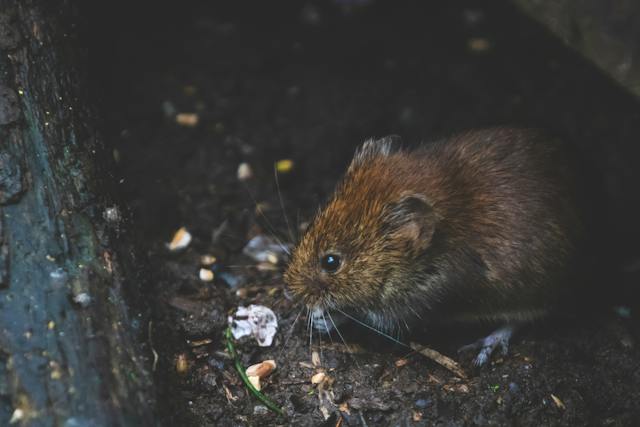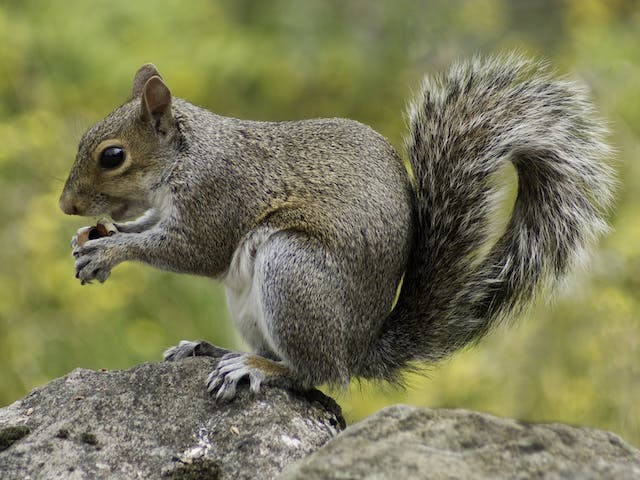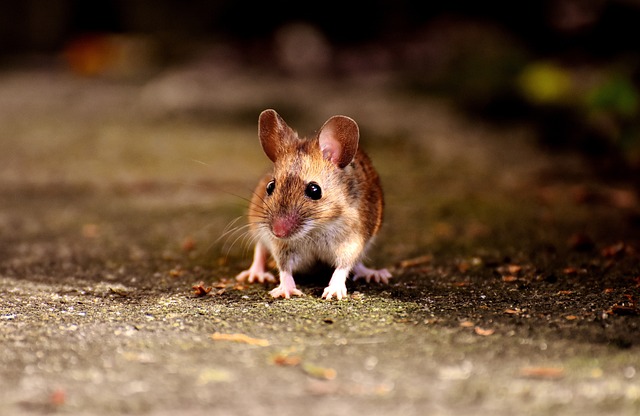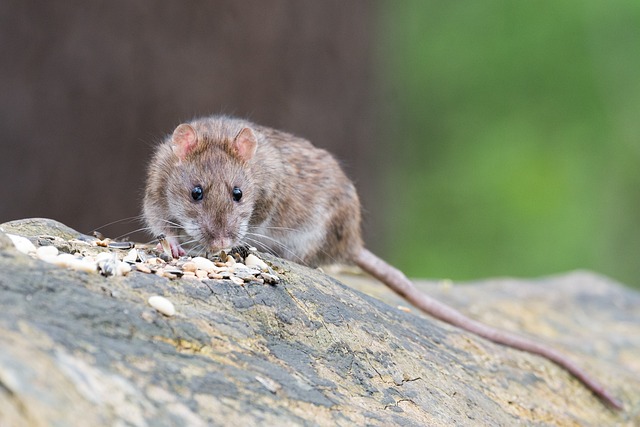
From the resilient house mouse to the persistent roof rat, rodents pose unique challenges that require professional expertise for effective control. In this blog, we delve into the biology, behavior, and preventive measures against rodents, offering insights into their impact on structures, health risks, and the tailored strategies employed by pest control professionals. Whether you’re grappling with a rodent infestation or seeking proactive measures to keep your property secure, join us for a detailed exploration of rodent management solutions and best practices in the realm of pest control.
What is (and isn’t) a Rodent
First thing’s first: what is a rodent, actually? While there are over 2,000 types of rodents on the planet, each with their own distinct qualities, rodents all share a few characteristics that make them, well, rodents:
- Incisors: Rodents have a pair of sharp, chisel-like incisors in the front of their mouths that continuously grow throughout their lives.
- Adaptability: Rodents are highly adaptable and are found on every continent except Antarctica. They occupy a variety of habitats, ranging from forests and grasslands to urban environments.
- Feeding Habits: While the diet of rodents varies among species, many are herbivores, feeding on seeds, nuts, fruits, and vegetation. Some species are omnivores, incorporating insects and small animals into their diet.
- Reproduction: Rodents are known for their prolific reproductive abilities. They can have multiple litters in a year, and many species reach sexual maturity quickly.
- Nocturnal Behavior: Some rodents, particularly those in urban environments, may exhibit nocturnal behavior, being more active during the night to avoid predators.
Rodents common in South Florida– our part of town- are usually of the mouse and rat variety, including:
- House Mice
- Deer Mice
- Norway Rats
- Roof Rats
>>Click here to learn more about the specific rodents of South Florida.
But What Isn’t a Rodent?

We now have clarity around the basic qualities that make a rodent, well, a rodent, but what about those critters that seem to exist in the murky space of rodential uncertainty? Here’s an overview of some animals with dubious rodent status, and the truth of their taxonomic order:
- Rabbits – Not a rodent ❌
- Squirrels – A rodent ✅
- Raccoons – Not a rodent ❌
- Bats – Not a rodent ❌
- Ferrets – Not a rodent ❌
- Beavers – A rodent ✅
- Moles – Not a rodent ❌
- Possums – Not a rodent ❌
Having identified rodents, and non-rodents, we can move forward focusing on the most problematic rodents in Florida: mice and rats.
Mice in Florida

The Mouse Diet
When a mouse infests a home, there are a few household foodstuffs that they tend to find most appetizing:
- Crumb and food scraps: Mice are attracted to crumbs and leftover food, especially in kitchen areas. Ensure that food is stored in airtight containers and clean up any spills promptly.
- Grains and cereals: Mice are known to eat grains and cereals, so any open containers of these foods can attract them.
- Pet food: Open bags of pet food can be a food source for mice. Keep pet food in sealed containers.
- Garbage: Mice may scavenge through garbage for food scraps, so make sure your trash bins are securely closed.
- Nuts and seeds: Mice are attracted to nuts and seeds, so it’s important to store these items in sealed containers.
- Fruits: Mice may nibble on fruits, especially if they are left out in the open.
- Food in bird feeders: If you have bird feeders near your home, spilled birdseed can attract mice.
- Cardboard and paper: Mice may chew on cardboard or paper for nesting material, so be mindful of clutter and dispose of unnecessary paper products.
Mouse Lifespan & Reproduction
If your home is plagued with a mouse problem, you may be wondering:
- How long the mice in your home may live and;
- How rapidly can the mice in your home reproduce
Let’s take a look at lifespan and reproductive habits to better understand the longevity potential of a mouse infestation.
Lifespan
Wild mice that infest homes typically have a lifespan that is influenced by various factors, including their environment, availability of food, predators, and exposure to potential dangers. In the wild, mice face numerous challenges that can impact their lifespan, and these challenges are often heightened in human-built environments.
Wild mice living in homes may have shorter lifespans compared to those in more natural settings due to various reasons:
- Predation: Indoor environments may have fewer natural predators for mice, but there can still be risks from pets, traps, or other control measures.
- Diseases: Close living quarters and shared spaces can lead to the spread of diseases among mouse populations.
- Limited Resources: While a home provides shelter, the available food may not be nutritionally ideal, and competition for resources among mice can be high.
- Human Intervention: Control measures implemented by homeowners or pest control professionals can impact the lifespan of wild mice.
In general, wild mice in homes often have a shorter lifespan than their counterparts in more natural habitats. Their ability to find food, evade predators, and avoid human interventions all play roles in determining how long they can survive in an infested environment – but on average 1-2 years is the approximate lifespan of a wild mouse in a home environment without professional rodent control.
Reproduction
Wild mice are known for their prolific reproductive capabilities, and their ability to breed rapidly is one of the reasons they can become a significant issue when infesting a home. Here are some key points about the reproductive behavior of wild mice:
- High Reproductive Rate: Mice can reproduce throughout the year, and a single female mouse can have multiple litters annually. A typical gestation period for a mouse is about 19 to 21 days.
- Large Litters: Each litter can consist of five to ten or more pups, although the exact number can vary. Mice reach sexual maturity quickly, often within a few weeks to a couple of months, depending on the species and environmental conditions.
- Continuous Breeding: The ability of mice to breed continuously, combined with their short gestation period and quick maturation, allows for exponential population growth. This is why a mouse infestation can escalate rapidly if not addressed promptly.
- Nesting Sites: Female mice seek sheltered and secluded areas for nesting, and a home provides numerous potential nesting sites. They may use materials such as paper, cloth, or insulation to build nests for their young.
- Hidden Litters: Mice are nocturnal and secretive, so they may give birth and care for their young in hidden locations within the home, making it challenging for homeowners to detect and control the population.
Given their reproductive capabilities, it’s crucial to address a mouse infestation promptly to prevent the population from multiplying rapidly. Effective rodent control measures often involve a combination of trapping, exclusion, and sanitation to eliminate existing mice and prevent further infestations.
Why Are Mice Infesting My Home in the First Place?

Mice are attracted to homes for several reasons, and understanding these factors can help you take preventive measures to reduce the risk of an infestation. Here are some common factors that attract mice to homes:
- Food Sources: Mice are attracted to easily accessible food. Crumbs, spilled food, open food containers, and improperly stored pantry items can all provide a tempting feast for mice.
- Water Sources: Like any other creature, mice need water to survive. Leaky pipes, dripping faucets, and standing water can attract mice to your home.
- Shelter and Nesting Sites: Mice seek shelter to build nests and raise their young. Cluttered areas, storage boxes, and unused items in attics or basements can provide ideal nesting sites.
- Warmth and Comfort: Homes offer a warm and comfortable environment, especially during colder seasons. Mice may enter homes seeking refuge from harsh weather conditions.
- Entry Points: Mice can squeeze through very small openings. Cracks, gaps, and openings around doors, windows, foundations, and utility penetrations provide easy entry points for mice.
- Pet Food: Leftover pet food, especially if kept in open bowls, can attract mice. Store pet food in sealed containers and clean up any spills promptly.
- Garbage: Open or poorly sealed garbage cans provide a ready food source for mice. Ensure that garbage cans are tightly closed.
- Fruit Trees and Gardens: If you have fruit trees or a vegetable garden close to your home, fallen fruits or vegetables can attract mice.
The Signs of a Mouse Infestation
- Droppings: Mouse droppings are small, pellet-shaped, and can be found in areas where mice are active. Common places include kitchen cabinets, drawers, and along baseboards.
- Gnaw Marks: Mice have a habit of gnawing on various materials to keep their teeth trimmed. Look for gnaw marks on food packaging, furniture, wiring, and other household items.
- Nesting Materials: Mice use materials like shredded paper, fabric, and insulation to build nests. Check hidden or less-frequented areas for nests, such as behind appliances or in storage areas.
- Grease Marks: As mice move along walls and baseboards, they may leave greasy smudges or rub marks. These marks are often more noticeable in areas frequented by mice.
- Scratching Noises: Mice are active at night, and you may hear scratching or squeaking sounds in walls, ceilings, or other hidden spaces.
- Urine Odor: The presence of mice can be accompanied by a distinctive, musky odor from their urine. This odor may be particularly noticeable in enclosed spaces.
- Footprints: Mice may leave tracks or footprints in dusty or powdery areas. Use a flashlight to look for tracks near suspected entry points or along baseboards.
- Chewed Food Packaging: Check food packaging for signs of gnawing or chewing. Mice can contaminate food supplies and leave behind evidence of their activity.
- Holes or Entry Points: Inspect your home for small holes or openings in walls, floors, and foundations. Mice can squeeze through surprisingly small gaps.
- Deterioration of Insulation: In attics or crawl spaces, mice may use insulation materials for nesting, leading to visible damage or deterioration.
DIY Mouse Repellent: Does it Work?
While there are various DIY solutions and home remedies that people claim can help deter mice, it’s essential to note that the effectiveness of these methods can vary, and some may not be backed by scientific evidence. Here are a few examples:
- Mothballs: Mothballs contain chemicals like naphthalene or paradichlorobenzene, and some people believe that the strong odor repels mice. However, the use of mothballs for this purpose is not recommended. The chemicals in mothballs can be toxic to humans and pets, and their effectiveness in deterring mice is questionable. Additionally, the Centers for Disease Control and Prevention (CDC) advises against using mothballs as a rodent deterrent.
- Peppermint Oil: Some individuals suggest that the strong scent of peppermint oil can repel mice. While there is limited anecdotal evidence supporting this idea, scientific studies on the effectiveness of peppermint oil as a mouse repellent are inconclusive.
- Ultrasonic Devices: Ultrasonic devices claim to emit high-frequency sounds that are unpleasant for mice, driving them away. However, the scientific evidence supporting the efficacy of these devices is mixed, and their effectiveness may be limited.
- Ammonia: Ammonia has a strong odor, and some people believe that placing ammonia-soaked rags in areas frequented by mice can deter them. However, the effectiveness of this method is uncertain, and ammonia can be irritating to humans and pets.
While these DIY methods may have some anecdotal support, they are not foolproof, and the best approach to dealing with a mouse infestation is often a combination of preventive measures, proper sanitation, and targeted pest control methods
Mice Prevention Tips

- Seal Entry Points
Inspect your home for any cracks, gaps, or openings in walls, doors, windows, and foundations. Seal these entry points with caulk or other appropriate materials. Pay attention to areas where utility lines enter your home, as mice can exploit even small openings. - Proper Food Storage
Store food, including pet food, in airtight containers. Clean up food crumbs and spills promptly. Keep kitchen areas and pantries well-organized to reduce hiding spots for mice. - Regular Cleaning
Regularly clean areas prone to crumbs and food debris, including under appliances and furniture. Remove clutter in storage areas to eliminate potential nesting sites. - Garbage Management
Use tightly sealed garbage cans, and empty them regularly. Keep outdoor garbage bins away from the home. - Landscaping Maintenance
Trim vegetation and keep a clear space between the exterior of your home and dense plants to reduce hiding spots. Pick up fallen fruits and vegetables in your garden promptly. - Proper Storage
Store items in plastic or metal containers rather than cardboard boxes, as mice can easily chew through cardboard. - Regular Inspections
Conduct regular inspections of your home for signs of mice, such as droppings, gnaw marks, or nests. Address any issues promptly to prevent a small problem from turning into a larger infestation. - Use Mouse Traps
Consider using mouse traps as a preventive measure, especially in areas where mice are likely to enter. - Seal Crawl Spaces and Vents
Make sure crawl spaces, vents, and other openings in the foundation are properly sealed to prevent mice from entering. - Professional Inspection
Consider scheduling periodic professional pest inspections to catch and address potential issues early.
Rats in Florida

The Rat Diet
Wild rats are opportunistic feeders, and their diet can vary based on the available food sources in their environment. When rats infest homes, they will consume a wide range of items, often scavenging for whatever is accessible. Some common food sources for wild rats in homes include:
- Leftover Food: Rats are attracted to any leftover human or pet food, including crumbs and spills. Kitchens and dining areas are common places for rats to forage.
- Garbage: Rats will readily feed on the contents of garbage bins, so it’s essential to keep garbage cans tightly sealed.
- Pet Food: Open bags of pet food can attract rats. Storing pet food in sealed containers helps prevent access.
- Grains and Cereals: Rats are known to eat grains, cereals, and other pantry items. They can gnaw through packaging to access these food sources.
- Fruits and Vegetables: Rats may consume fruits and vegetables, especially if left out in the open. Gardens with ripe produce can attract them.
- Nuts and Seeds: Rats are attracted to nuts and seeds, which they may find in pantries or storage areas.
- Bird Seed: If you have bird feeders near your home, spilled bird seed can be a food source for rats.
- Insects: Rats may also consume insects, and an infestation of rats can coincide with an increase in insect populations.
Rat Lifespan & Reproduction
As with mice, lifespan and reproduction capabilities is important knowledge to have for any home or business owner dealing with a rat infestation.
Lifespan
The lifespan of wild rats that infest homes can vary depending on factors such as species, environmental conditions, and the presence of predators or control measures.
In the wild, the typical lifespan of a rat is relatively short due to various challenges, including predation, disease, and exposure to environmental hazards. Wild rats may live on average up to a year or slightly longer, although many may not reach their first birthday. Factors that can influence the lifespan of wild rats in homes include:
- Predation: Rats face threats from predators such as owls, hawks, snakes, and other animals, which can significantly impact their lifespan.
- Disease: Rats are susceptible to various diseases, and the spread of diseases within rat populations can affect their overall health and longevity.
- Human Intervention: Control measures implemented by homeowners or pest control professionals can impact the lifespan of rats in and around homes.
- Availability of Food and Shelter: The presence of abundant food sources and suitable shelter in and around homes can contribute to the survival and reproduction of rat populations.
It’s important to note that rats are prolific breeders, and a small number of individuals can quickly multiply into a larger population if not addressed promptly.
Reproduction
Wild rats are known for their rapid reproductive rates, and a rat infestation can escalate quickly due to their prolific breeding. The reproductive capacity of rats contributes significantly to their success as opportunistic and adaptable rodents. Here are some key points regarding the reproductive behavior of wild rats:
- Gestation Period: The gestation period for female rats is relatively short, averaging about 21 to 23 days. This means that a pregnant female rat can give birth to a litter of baby rats in less than a month.
- Litter Size: Rats typically have large litters. The number of pups in a litter can vary, but it is common for a female rat to give birth to 6 to 12 pups in a single litter. However, litters of up to 20 or more pups are not uncommon.
- Postpartum Estrus: Female rats exhibit a phenomenon known as postpartum estrus, meaning they can become pregnant again shortly after giving birth. This allows them to have multiple litters in a year.
- Maturity and Reproduction Age: Rats reach sexual maturity quickly. Female rats can become sexually mature as early as 5 weeks of age, while males may become sexually mature by 6 to 12 weeks of age.
- Continuous Breeding: The ability of rats to breed continuously, combined with their short gestation period and large litter size, allows for exponential population growth. A single pair of rats and their offspring can produce a large number of descendants within a short period.
Given these reproductive characteristics, a rat infestation can become a serious problem if not addressed promptly.
How Big Can Rats Get?
One question that we commonly hear regarding rats is related to size. Put simply, the question boils down to, “how big can rats get?”. The common rats that infest homes, Norway Rats and Roof Rats, vary in size, but both can get quite large, nose to tail:
Norway Rat
Adult Body Length: Approximately 7 to 9 inches
Tail Length: About 6 to 8 inches
Weight: Typically 7 to 18 ounces
Roof Rat
Adult Body Length: Approximately 6 to 8 inches
Tail Length: Equal to or longer than the body, typically 7 to 10 inches
Weight: Typically 5 to 10 ounces
In summary, rats can get big enough to be incredibly uncomfortable- and even scary- to see skittering around your home.
The Signs of a Rat Infestation

- Droppings: Rat droppings are larger than mouse droppings, typically about 0.5 to 0.75 inches long with tapered ends. Check for droppings in areas where rats are active, such as along walls, in cupboards, or near food sources.
- Gnaw Marks: Rats have a constant need to gnaw to keep their teeth trimmed. Look for gnaw marks on wood, plastic, wiring, and other materials. Fresh gnaw marks will have a lighter color.
- Nesting Materials: Rats use materials like shredded paper, cloth, and insulation to build nests. Inspect hidden or secluded areas for nests, such as attics, basements, or behind appliances.
- Grease Marks: Rats often travel along walls and baseboards, leaving greasy smudges or rub marks. These marks may be more noticeable in areas with high rat activity.
- Urine Odor: Rats produce a strong, ammonia-like odor in their urine. If there’s a significant infestation, you may notice a distinct smell in enclosed spaces.
- Scratching Noises: Rats are nocturnal and may create scratching or scurrying sounds, especially at night. Listen for noises in walls, ceilings, or crawl spaces.
- Footprints: Rats may leave tracks or footprints in dusty or powdery areas. Use a flashlight to check for tracks near suspected entry points or along baseboards.
- Chewed Food Packaging: Rats can contaminate food supplies by gnawing on packaging. Check for signs of chewing on stored food items.
- Holes or Entry Points: Inspect your home for small holes or openings in walls, floors, and foundations. Rats can enter through surprisingly small gaps.
- Live or Dead Rats: Seeing live or dead rats in or around your home is a clear sign of an infestation. Dead rats may be found in hidden areas or near food sources.
The Rat “Instant Death” Myth
While some online articles or blogs may try to convince you otherwise, there isn’t a specific food or smell that is known to instantly kill rats. Rats are generally cautious animals, and they may avoid substances or odors that are toxic to them. However, the effectiveness of certain foods or smells in killing rats instantly is not supported by scientific evidence, and attempts to control rat populations should be approached with caution.
Commonly suggested substances that are believed to repel or harm rats include certain essential oils, spices, or chemical compounds. Examples often mentioned include peppermint oil, garlic, and various chemical repellents. While these substances may have some repellent properties, they are extremely unlikely to result in instant death.
Effective Rat Prevention Methods
- Seal Entry Points
Inspect your home for gaps, cracks, and openings that rats could use to enter. Seal these entry points with materials like caulk or steel wool. Pay attention to areas around doors, windows, utility lines, vents, and the foundation. - Maintain Cleanliness
Keep your home and surrounding areas clean. Regularly sweep and vacuum floors, and clean up food crumbs and spills promptly. Store food in airtight containers to deny rats easy access to a food source. - Proper Waste Management
Use tightly sealed garbage bins, and dispose of garbage regularly. Avoid leaving food waste or open garbage bags lying around. - Trim Vegetation
Trim trees and shrubs, especially those close to your home, to eliminate potential hiding spots and prevent rats from gaining easy access to your roof or attic. - Secure Pet Food
Store pet food in sealed containers, and avoid leaving food bowls out overnight. Clean up any spilled pet food promptly. - Eliminate Standing Water
Fix leaks and eliminate standing water, as rats require water sources for survival. Check for and fix any plumbing issues promptly. - Use Hardware Cloth
Install hardware cloth (mesh) around crawl spaces, vents, and other openings in your home to prevent rat entry. - Regular Inspections
Conduct regular inspections of your property, both inside and outside, for signs of rat activity. Look for gnaw marks, droppings, and evidence of nests. - Use Traps and Bait Stations
Consider using traps or bait stations in areas where rat activity is suspected. Follow safety guidelines when using traps or rodenticides, and keep them out of reach of children and pets. - Professional Inspection
Schedule periodic professional pest inspections to identify and address potential issues before they escalate.
Dealing With a Rodent Infestation
If you find yourself in a position in which your South Florida home or business is infested with mice, rats, or any other pest, Nozzle Nolen can help! Our comprehensive pest and rodent control program, 365 Complete, addresses all existing rodent problems and secures your home from future infestations – with the added bonus of preventing other common pest problems, including general household pests and termites.
Interested in a Nozzle Nolen rodent solution? Just get in touch with us by calling the phone number at the top of this page, or fill out a form on this page and a Nozzle pest specialist will get in touch with you to schedule your free inspection ASAP!




